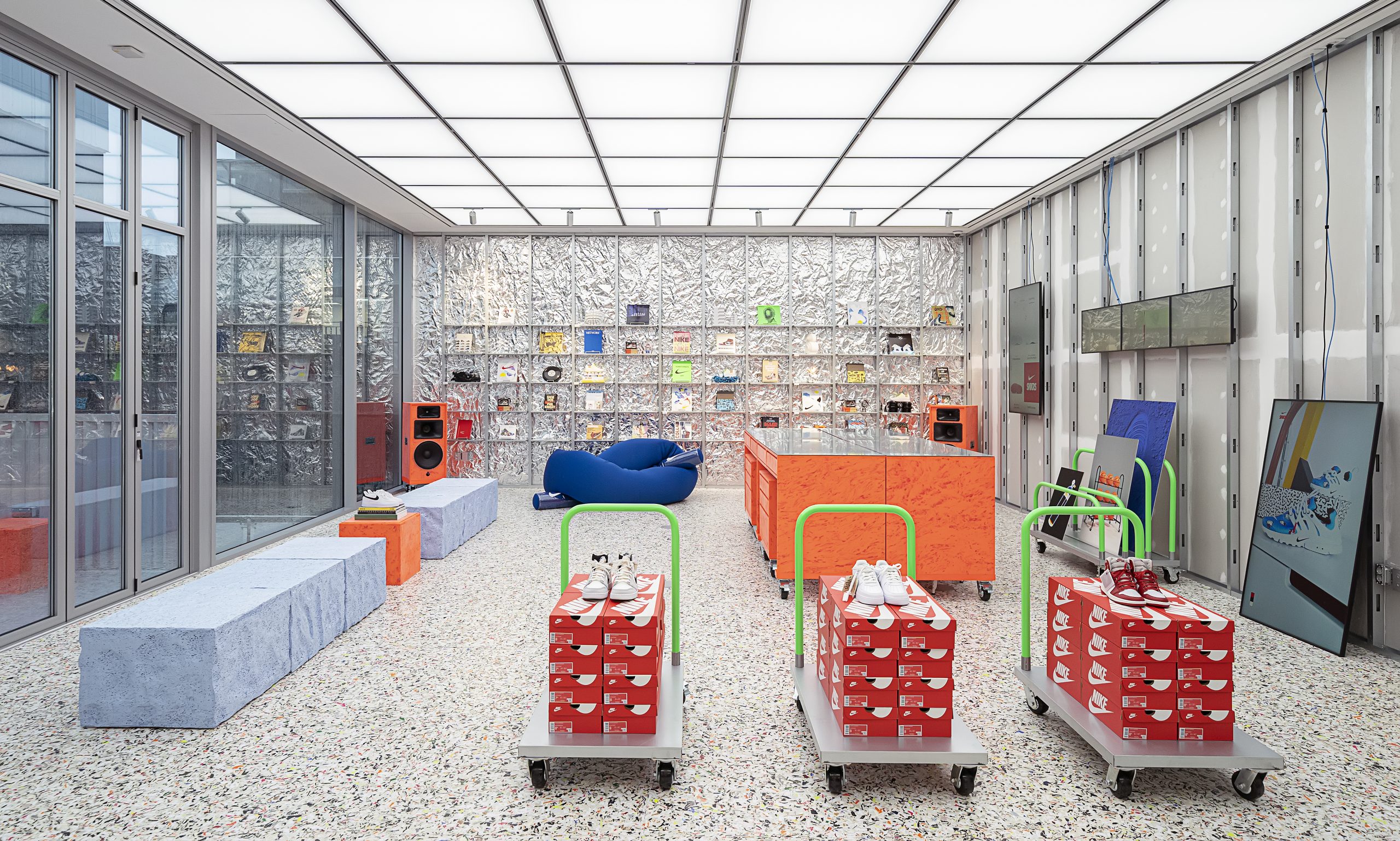As experience designers, we’re sometimes guilty of getting sucked into the one specific experience we’re creating.
But guess what? Experiences don’t exist in a vacuum.
The way in which people interact with them is based on several shifting factors, including their perception of your brand, their personal relationship with what you do, and their experience at previous touchpoints.
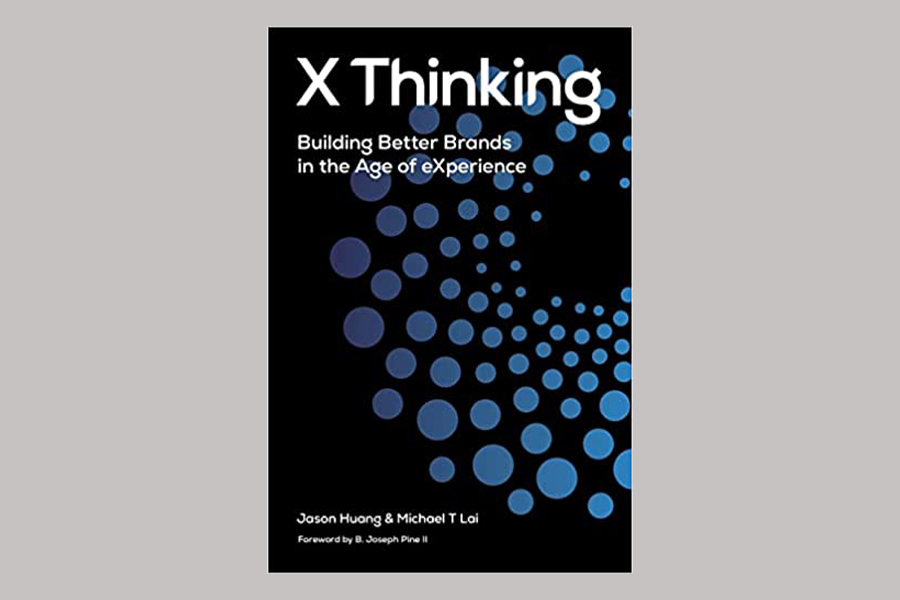
So when designing, we need to consider the totality of a person’s experience. If we don’t, we’re not only potentially missing out on identifying new, valuable customers – we’re also failing to understand where, when and how we can deliver them the most value.
To help map out the way to do this – and to open Season 5 of the WXO Campfires! – we invited Dr Michael T Lai to share insights from his book X Thinking: the first book on the Experience Economy to be published in Chinese. (Read Lai’s previous Campfire, The Experience Thinking Relationship Model, here.)
Lai has created a crystal-clear roadmap for any business that wants to leverage experience to deliver a better brand, better customer relationships, and better shareholder returns. Through easy-to-understand models and a case study, he explains how in a ruthless retail landscape, experience is the key strategic advantage for your business.
Because if we all mastered X Thinking, we might flip our experience projects into more sustainable and successful businesses, and fleeting encounters into long-term relationships…
China Speed & The Changing Consumer

X Thinking was born out of the China context. Where the main texts on the Experience Economy, such as Pine & Gilmour’s seminal tome, have been written from a Western perspective, the pace of development in China is drastically different – and can reveal a lot about how consumers’ attitudes to experiences might evolve in the future.
China has advanced economically much faster than the West, and the way that people perceive economic value is different. Today’s business environment is intensely competitive, fast paced, and highly volatile. It’s not enough to just be efficient: people expect things to be done at “China speed”, i.e. for projects to be completed in half or a quarter of the usual timeframe. This makes it hard to plan strategically in advance.
The new, changing consumer has developed in response to this rate of pace. The technological development of China has been truncated in comparison to how it unfolded in the West, meaning that Chinese consumers are used to much faster change. When it comes to the tech we use, for example, whereas in the West the first experience was through desktop, China is a mobile-first economy. This means that while the West has taken longer to shift towards a mobile-centric approach and still tends towards a universal mindset, many Chinese companies don’t even have a website, preferring to use mobile apps such as WeChat.
This new way of thinking demands a new business philosophy. Enter X Thinking: Lai’s philosophy on what businesses should do in this new, hyper-competitive and fast world. The answer, as we’ll learn, is to leverage experience as a critical competitive advantage.
What’s The Tea? How Experience Took A Tea Brand From Zero To Hero
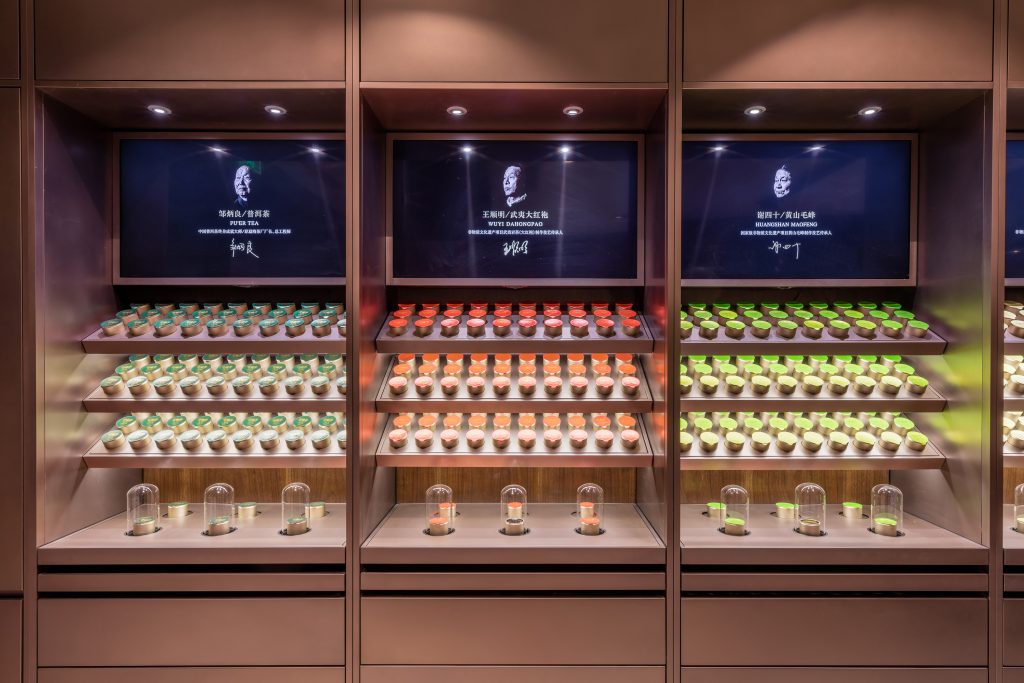
To illustrate how the X Thinking approach works, Lai took us through a real-life case study based on his work with a start-up selling Nespresso-sized tea capsules called Xiao Guan Tea.
At the time Xiao Guan Tea was entering the market, the number-one tea brand in China was Lipton – this despite China thinking of itself as the “home of tea”. Lipton not only had a market share of 50%, it had also managed this feat within five years of launching in China. If you added together the other top 10 tea companies in China, their combined sales were still less than Lipton and there were no strongly recognised Chinese tea brands.
The shopping experience, meanwhile, remained somewhat stuck in the past – despite the rapid pace of technological and economic progress elsewhere. Tea was served in large bowls, unbranded, in large quantities of a kilo or more.
When it came to deciding on a target audience for Xiao Guan Tea, initial assumptions had been that because of the high quality of the tea, they should be selling to tea enthusiasts. However, Lai uncovered a different opportunity: young, affluent entrepreneurs who don’t know much about tea or how to integrate it into their lives, but who are very responsive to brand values.
Lai and his team also found that modern China provided a set of specific cultural scenarios in which to revolutionise the tea-drinking experience – as a welcome gesture in business meetings, when travelling, or as a gift. They also understood the importance of modernising traditional rituals, as Johnnie Walker has successfully done with whiskey using modern campaigns and clubhouses. In the case of Xiao Guan Tea, the client was already working with eight “tea masters” in charge of different types of tea. How could they capture and leverage this story?
The Experience Vision Framework
To understand how the brand could present itself, stage an experience, and how people might perceive it, Lai created an Experience Vision Framework consisting of the following layers:
Brand value: sitting at the top level, this captures brand characteristics such as convenience, the premium quality of the tea, and the way in which people can use it to express a different aspect of themselves.
Experience principles: the middle tier explores questions such as how to communicate the blend of technology and art in each capsule, how staff show generosity and empathy, and creating a ritual that connects to the heart.
Outcomes: the bottom level sets out how you want people to share the experience – that they feel inspired and informed, it enables relationships, and has become an essential part of their lives.
All together, this framework shows how people should position the brand in their mind, how the company and its employees should stage it, and what people will be saying once they’ve experienced it.
In the case of Xiao Guan Tea, applying this framework led to innovations such as presenting the tea in pull-out drawers with video screens telling you about the person that made it, or installing tea bars in each shop where employees can guide people to discovering the tea that resonates with them.
The result was that three years after launching, by 2018 Xiao Guan Tea was the number-one tea brand in China by market share. More importantly, they did this without pulling any existing customers from the competing brands. Instead, they created brand-new customers.
Experience = The Bridge Between User & Brand
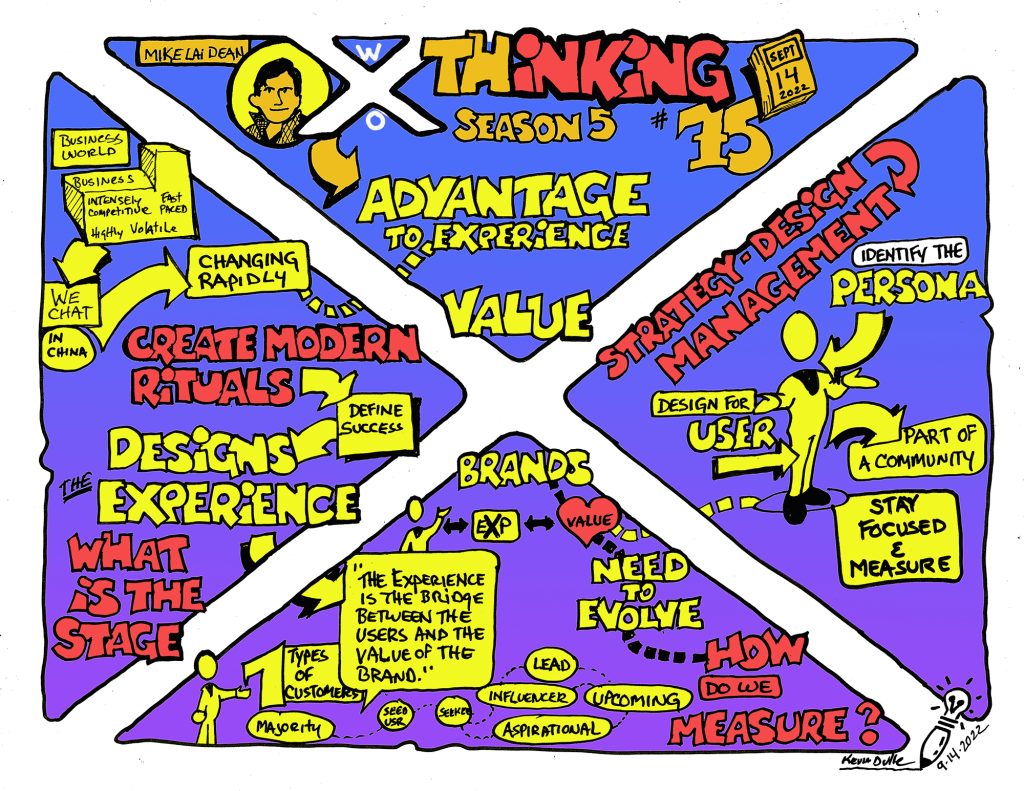
Within the WXO, we all work on different parts of delivering experiences. But how do these all work together – and how do they deliver value for brands?
In X Thinking, Lai develops the whole brand experience rather than an isolated series of events. Experience is the bridge between the user and the brand. So how do you figure out the right mix for people to really experience the value of your brand? Lai explained how the journey unfolds across stages.
- User interacting with product. In China, experience started with the introduction of the mobile phone around 2007. At this point, we understood there was a user interacting with a product, and started designing different aspects of the experience to create value for our customers.
- The 4 domains of experience. These fall into offerings, environments, behaviours, and communications.
- The journey of the relationship between user and brand, from presale to sale to post sale. There are multiple scenarios at these multiple touchpoints where you can stage the experience for people so they perceive your brand value.
- Repeating the journey. How many times do you go back to a brand you love? Each time someone repeats the journey, they’re entering a new variation, but need to walk away with a relatively similar brand proposition. Therefore the experience at every touchpoint should reflect this.
- The 7 types of consumer. Your target audience is often quite broad and made up of different types of people, all of whom have a different meaning to your brand. Your Seed User might give you more feedback, and attract Seekers, who want to experience a certain lifestyle. Influencers may not consume your brand, but will still partake in its delivery – and may eventually become a Majority User. There are also Aspirational Users, Lead Users and Upcoming Users.
- The transition from stranger to family member. Every time you encounter a brand, your relationship with it evolves. You start as a stranger, become an acquaintance who doesn’t know it very well, but over time may become a friend or even a family member: someone you’re loyal to and advocate for.
- Structuring the business to provide value. To maintain these relationships over time, some brands might have to offer multiple values, and therefore multiple brands. Think of Toyota, who developed the Lexus brand to cater to their more evolved customers who expected a more sophisticated lifestyle.
The Journey Towards X Thinking

The business approach to experience matures over time as they go through the above journey. Think of them as a pyramid:
Integrated: experience is fully integrated at every level of the organisation.
Managed: thinking about how to manage the whole experience.
Considered: recognising that experience matters.
Improvised: slapping experience onto parts of the business.
Unrecognised: experience isn’t recognised as an essential strategic advantage.
To get to the top of the pyramid, brands need to look at the model and ask themselves questions like:
- Did we target the right audience?
- Is our persona correct?
- Within each segment, what’s the lifetime value?
- How do we measure people’s journeys?
- How can we leverage people’s experience through the voice of the consumer?
- How is the brand performing in terms of mindshare?
If your organisation is able to answer these questions and therefore develop the brand experience for the right audience, it should be growing – or at least doing well!
The 3 Core Principles Of X Thinking
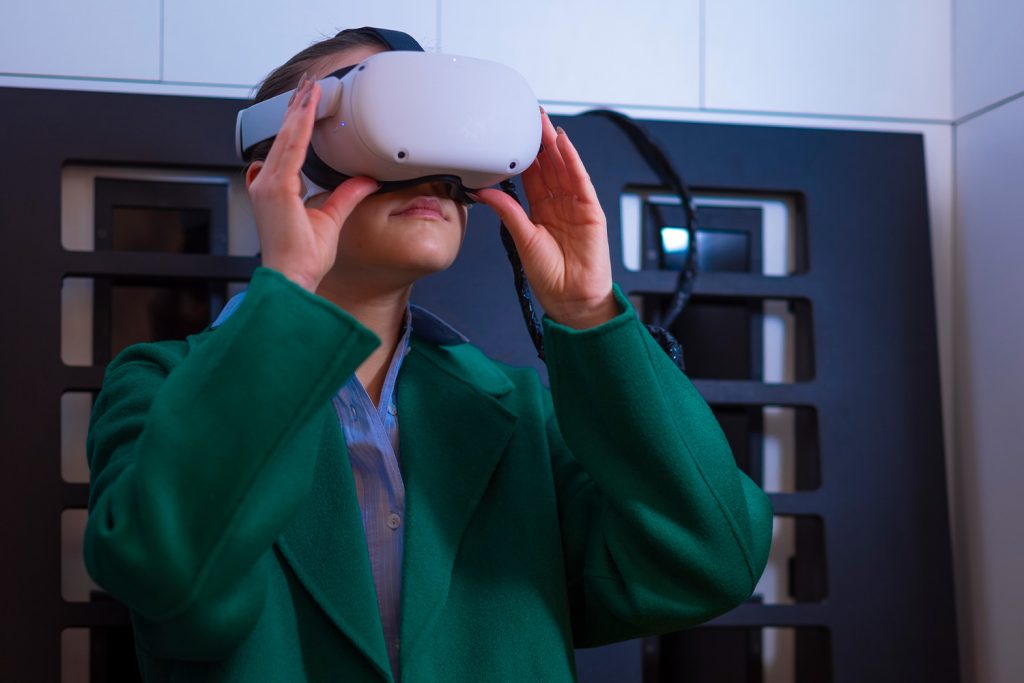
These break down as the following:
- People. Being human-centric, not customer-centric. This includes employees and people not part of the brand: recognising any needs they have, changes in their lives, and where we can deliver new value.
- Value. The need to deliver and create new value for people. This will generate economic value for business, but also contribute to building better people and a better society.
- Sustainability. How do you retain customers? How do you develop relationships from acquaintances to friends and then family?
“Experiences and the staging of them is a systems-based approach. You can’t see it in a snapshot. It means deciding what experience we should be creating for this brand. How we mean to create it. And measuring how impactful it is. If this data helps support or design the experience, you can create a closer and tighter relationship with your customers.”
Mike Lai
The Dynamic Relationship Between People, Experience And Value

When uncovering new users for your experience or product, you should be considering which user has the highest potential for really perceiving its value. The way to do this is by considering people, experience and value as a dynamic relationship. Create a hypothesis – if we target X audience, they’re interested in X value, so we create X kind of experience. (For more on this, see Playing to Win by Roger Martin.)
With Xiao Guan Tea, for example, had they targeted other audiences, the brand would have become less competitive as they didn’t have the infrastructure or resources to compete in a way that the audience perceives the value.
This approach works extremely well for market entry. Many existing companies have a product and a brand proposition that they want to maintain, so you have to show them that if the target audience and value are non-competitive, something has to give.
To counter this, brands might choose to craft a new product for the market in order to maintain their brand value proposition. Take IKEA – it has standard products throughout the world where the brand value proposition is that it’s affordable. In China, however, in terms of affordability it’s more mid-level – so they focus on the experience of Western design instead. KFC, meanwhile, has the same brand value proposition of being fun and folksy, but an entirely different menu incorporating Chinese dishes like rice bowls. When it comes to experiences, Secret Cinema offers different products to different people, and might well expand into digital in the future.
If the brand value proposition is very functional, you need to understand why. Abstraction could be key to helping people translate it into an experience value.
“Experiences are very abstract in nature, but we need to make them concrete when delivering. So start with the vision and try to make it more concrete. Abstract up to the value proposition you’re offering. Look at whether the features of your brand provide functional, emotional or meaningful benefits.”
Mike Lai
How To Fix A Bad Brand Experience

What about if something breaks at a point on the customer journey?
“I own a service design consultancy. Where a brand offers multiple services, they can have a lot of success with one service line, but when a consumer switches to another, it’s less successful. How do you recover that relationship once having failed?”
Anthony Weiler
The key is in understanding which scenarios truly matter to which customer and quantifying which user cares about which experience at which point. Some customers don’t care about certain services, but they do about others. So which do you prioritise, and which is your core customer? They might not be the most valuable, but they could be the most vocal, and therefore affect other customers.
Above all, it’s about how you manage the recovery more than the failure itself.
“The pain point is actually an opportunity for a moment of truth. People become more loyal and connected if you’re able to solve their problems. This is true of human relationships: if you have a miserable vacation with a friend, you become brothers with a story to tell.”
Mike Lai
Measuring Your Audience’s Perceptions

So how do you know how a customer perceives your brand value at any given point?
“I’m intrigued by the process of how you acquire data. If you ask a guest, they don’t know what they don’t know. We are the experts – so it’s our job to tell them what they need to know. I worry we’re asking the wrong questions.”
Tom Vannucci
This taps into a wider question about experience metrics that we’re continuing to investigate at the WXO – see Campfires 9, 22 or 35 for some key insights.
For Lai, it’s a process they’re still improving, but integrating both qualitative and quantitative data remains the aim.
“It’s not about asking, but observing their behaviour. But how do you integrate this in the data? How do you take all this qualitative experience methodology, and turn it into a systematic approach that can be repeated – and automated? How can we speed up something that used to take 6 months into a two-week timeframe with an experience management platform, and supplement it with qualitative data from our research team?”
Mike Lai
Optimising Sectors Using Experience

The idea of untapped value is perhaps a question of optimisation.
“Are you really getting people that weren’t there before, or are you bringing a perception of luxury to something that didn’t have it before?”
Lou Murray
It’s about looking at an existing traditional industry and thinking about what can be done to make it better. What sectors have yet to be revolutionised…?
The WXO Take-Out
When we’re designing an experience, we need to consider all stages and all customers. The experience of a brand is holistic, not fragmented.
These customers will have different needs depending on their point in their relationship with your brand, and these will change over time. Understanding this is crucial to provide the best value and design the most impactful experiences at every touchpoint.
And whoever you’re designing for, remember that whether they’re a guest, visitor, audience member, participant or customer, they’re all people – and:
“People DO form relationships with brands in the same way they form relationships with people.”
Joshua Rosenfeld
So next time you’re creating an experience, ask yourself:
- Who is the most valuable customer for your brand? What makes them the most valuable customer?
- What value do you provide this customer? Is it functional, emotional, or even meaningful?
- How can this customer perceive this value from your brand – that which sets you apart from your competitors?
Reading List
X Thinking: Building Better Brands In The Age Of Experience – Dr Michael T Lai
Value Proposition Design – Alexander Osterwalder
Playing To Win – Roger Martin
To continue the conversation, WXO Members can head to the topic on My WXO here.
To see the full line-up for the WXO Campfires Season 5, click here.
To apply to join the WXO and attend future Campfires, click here.

